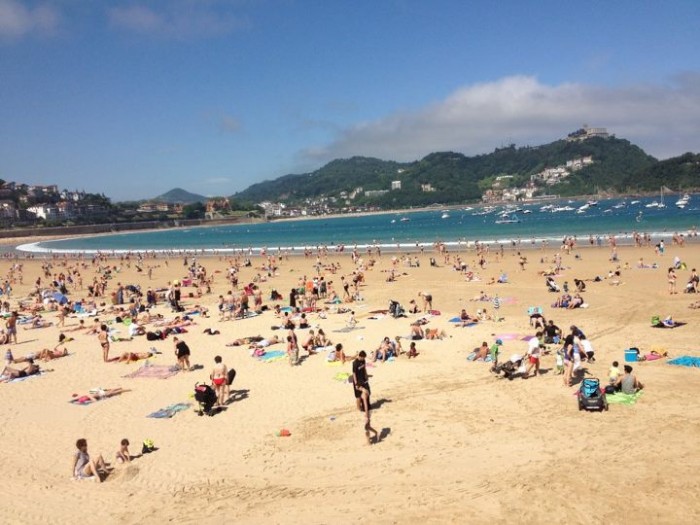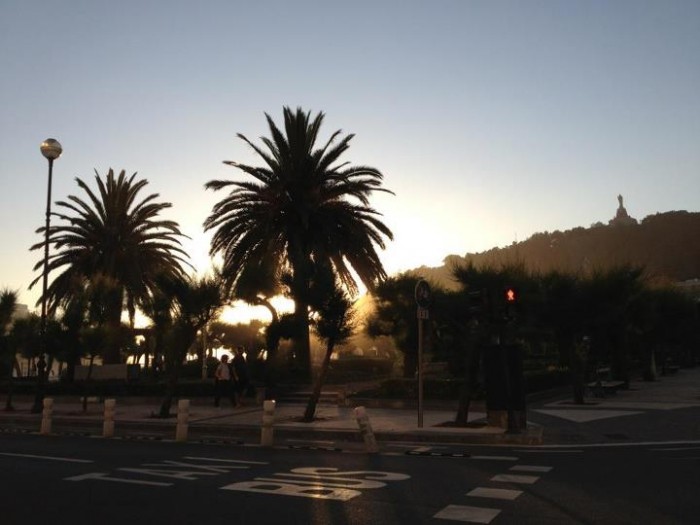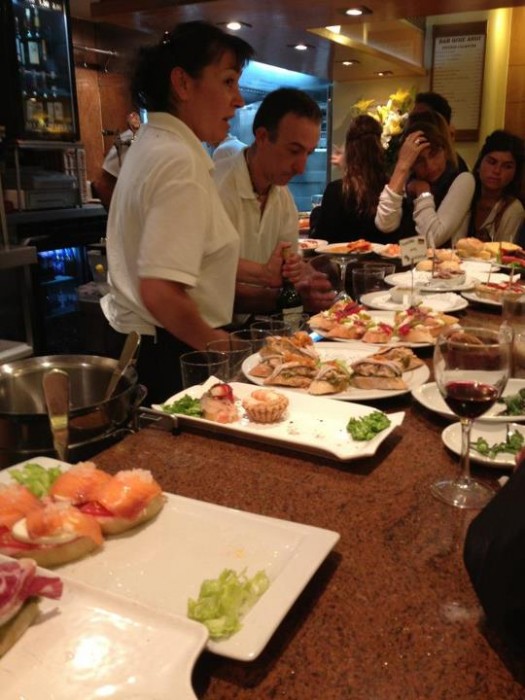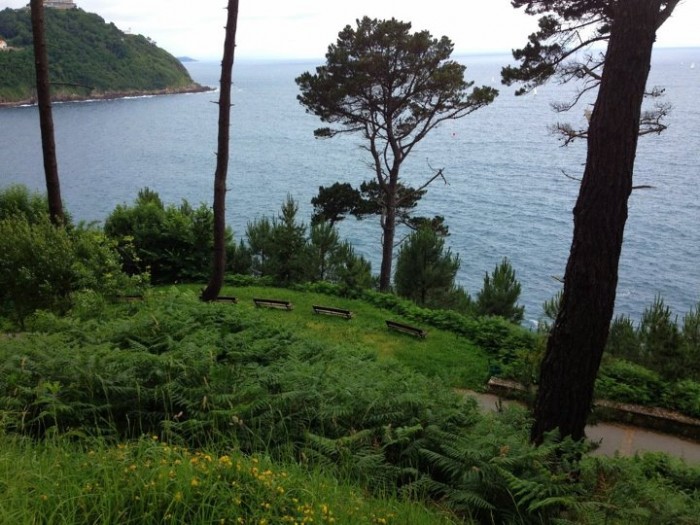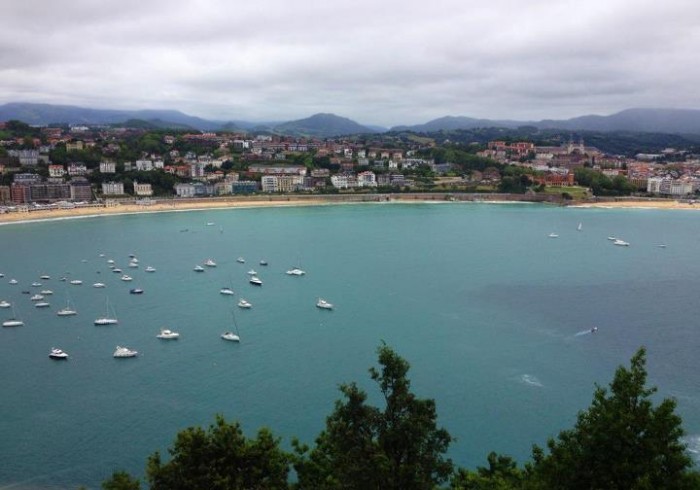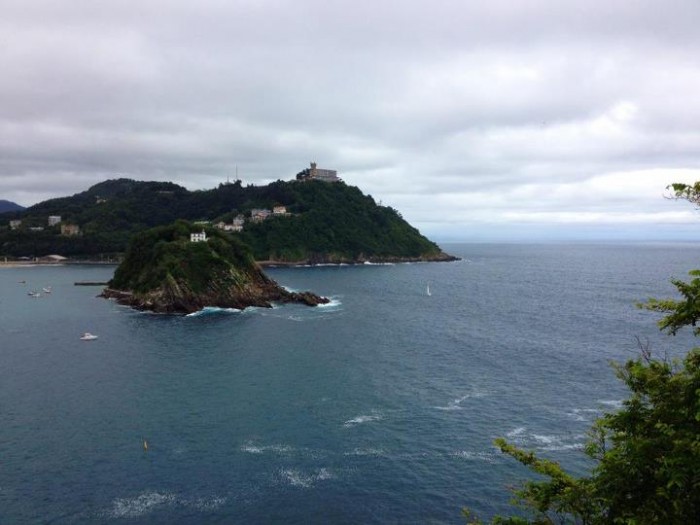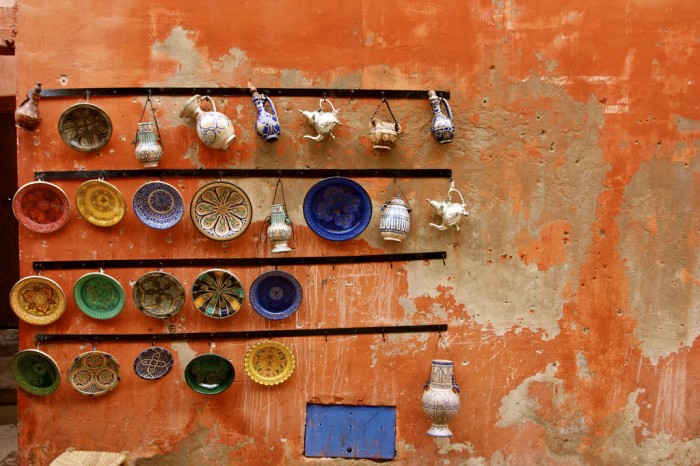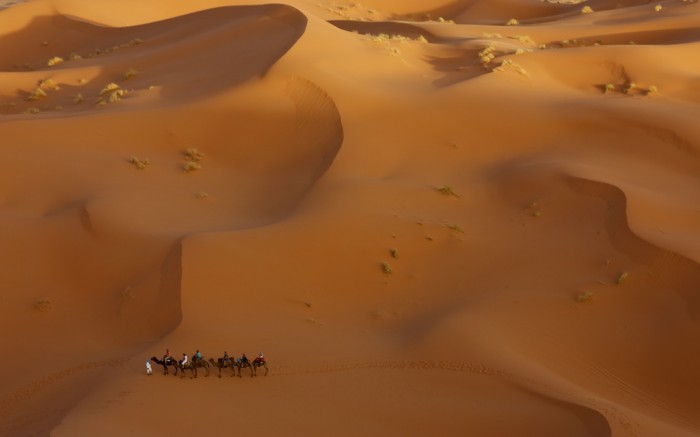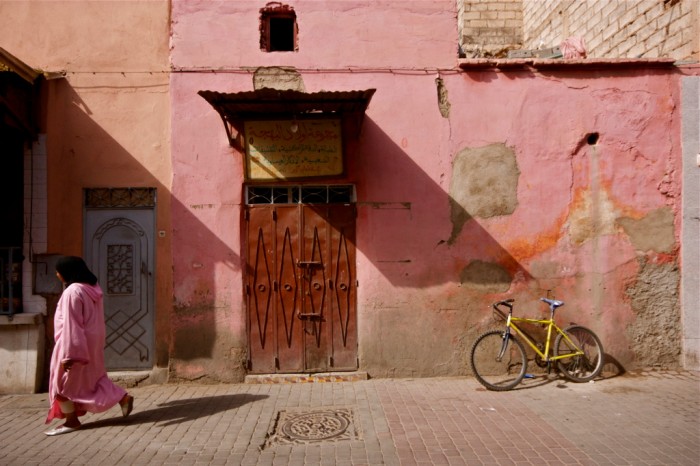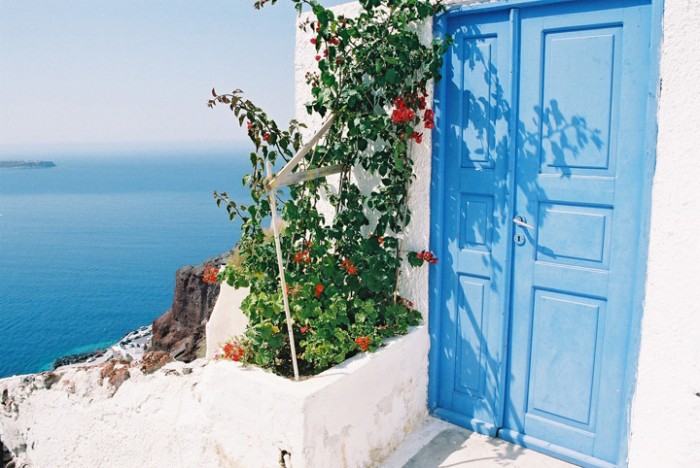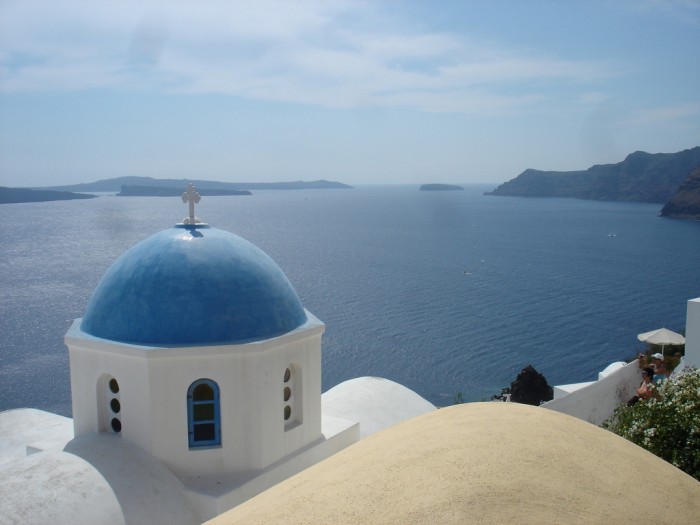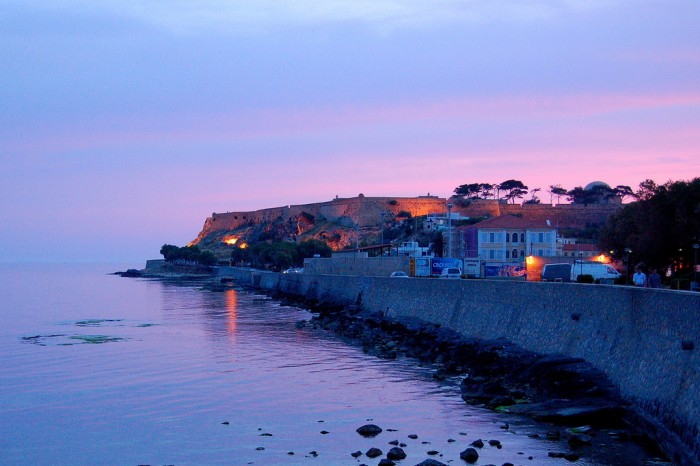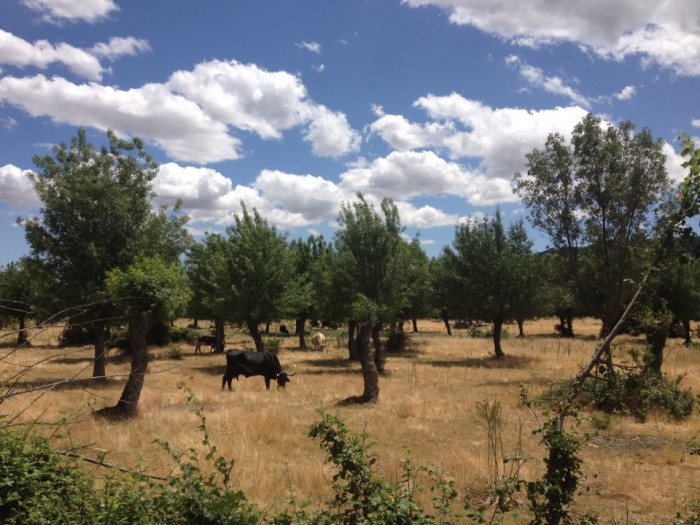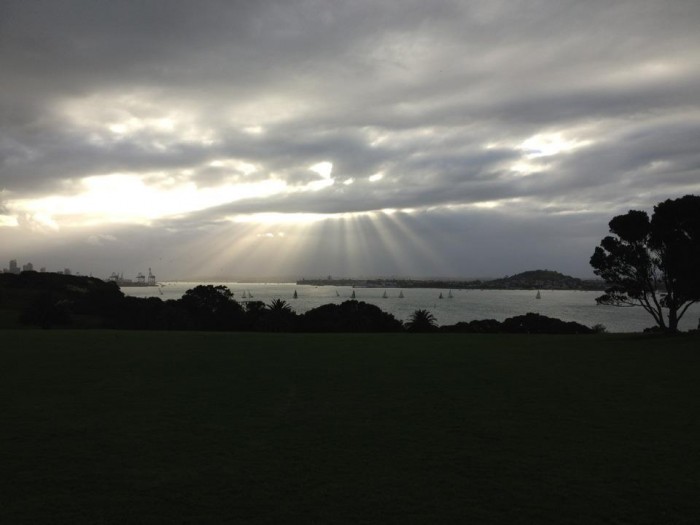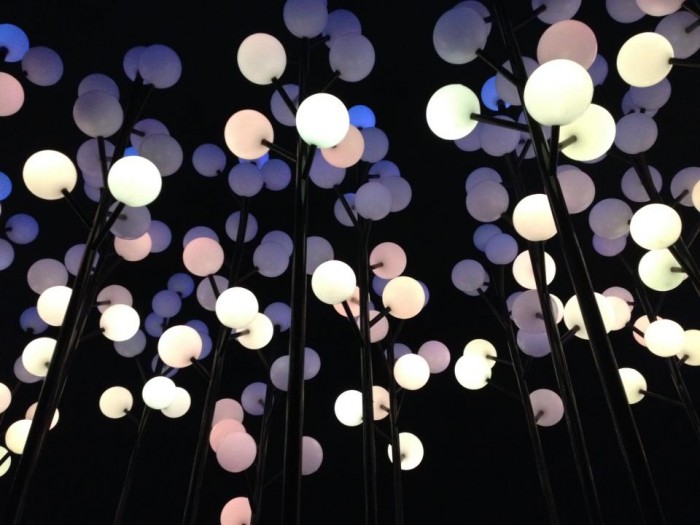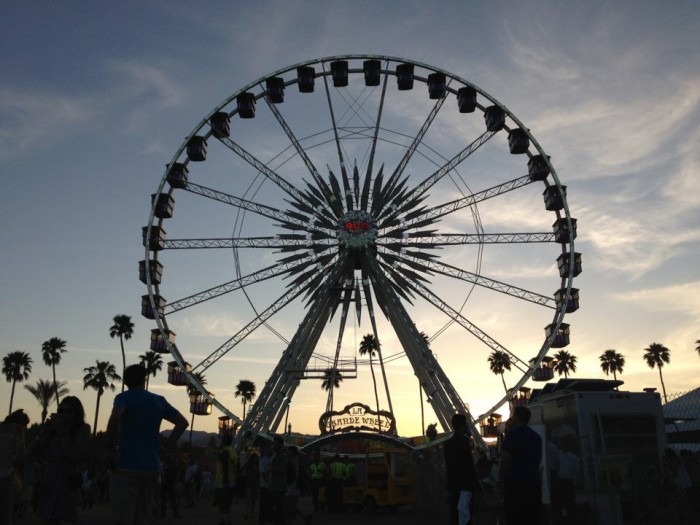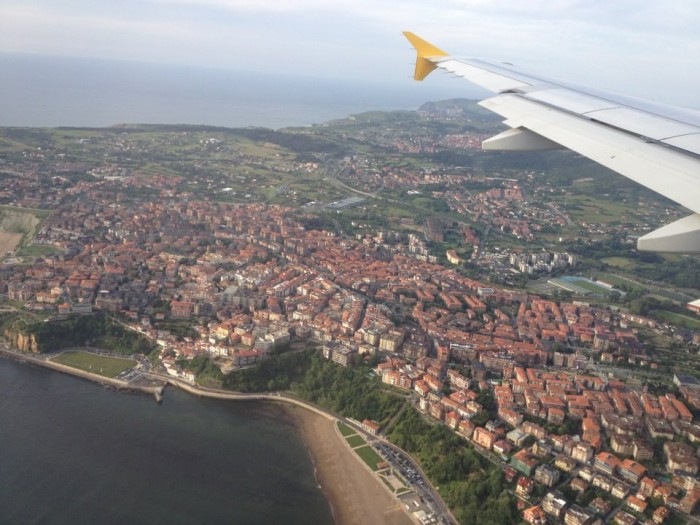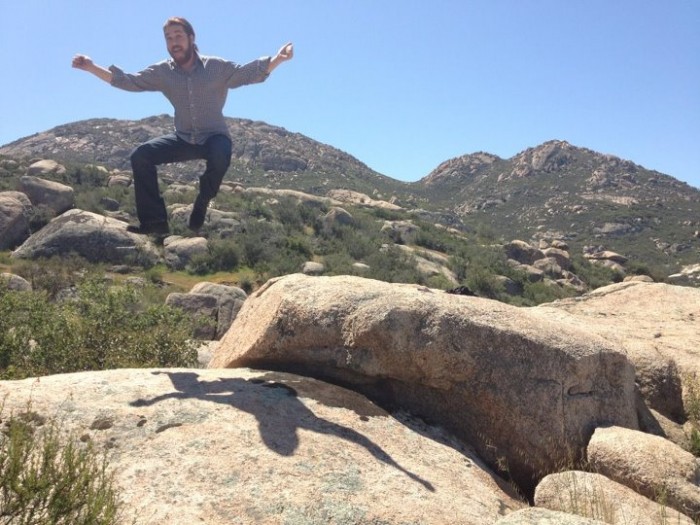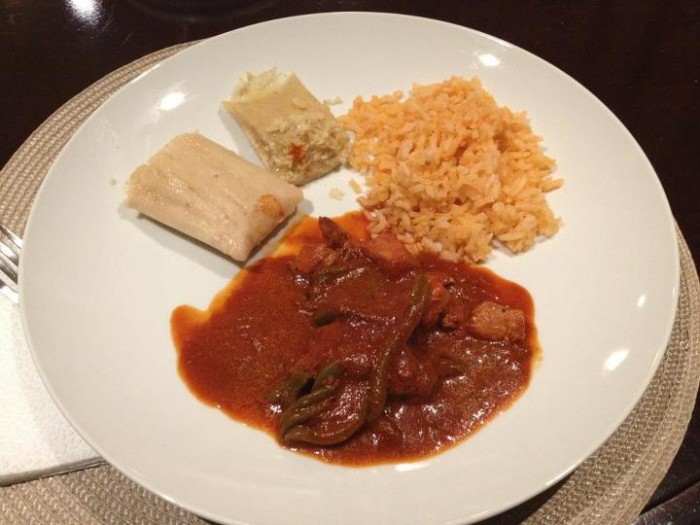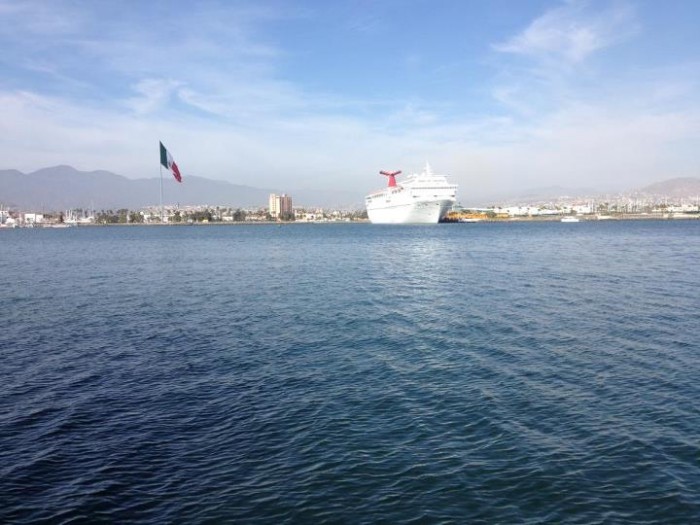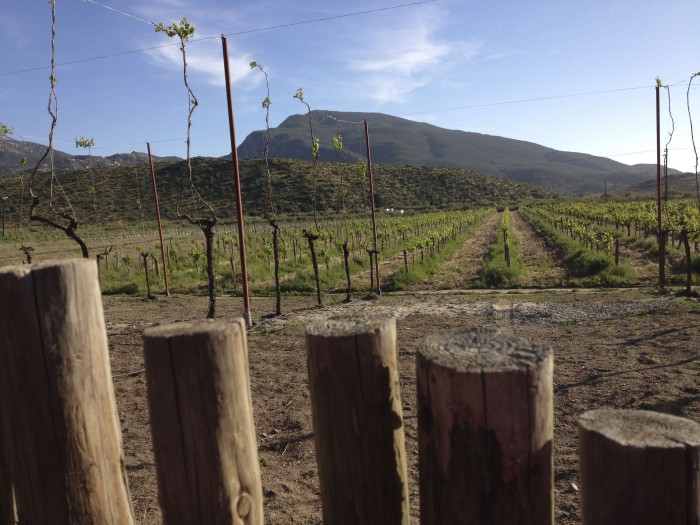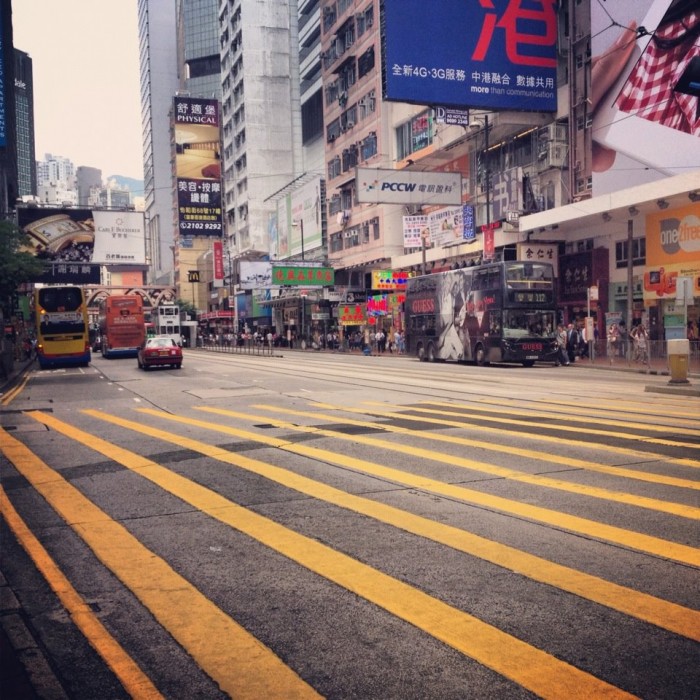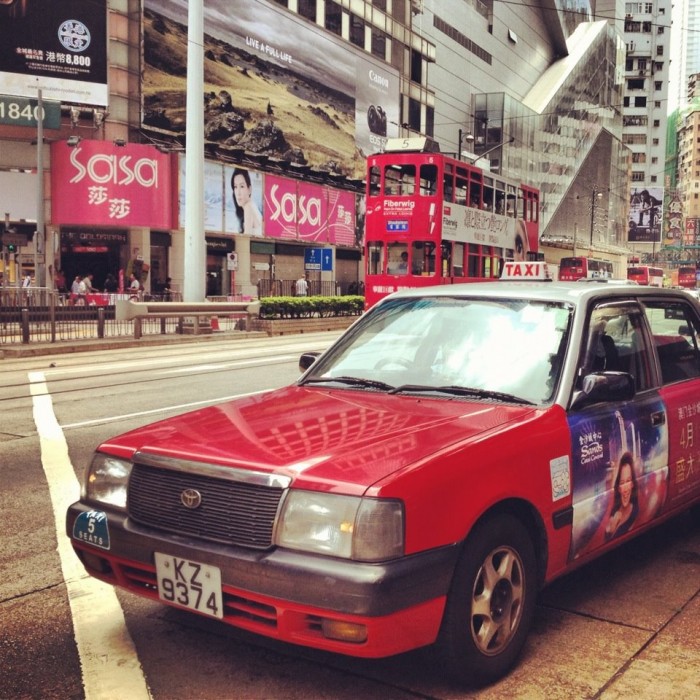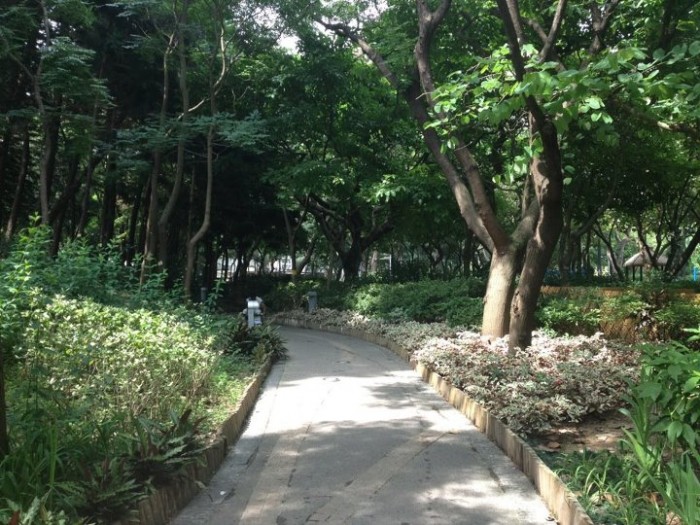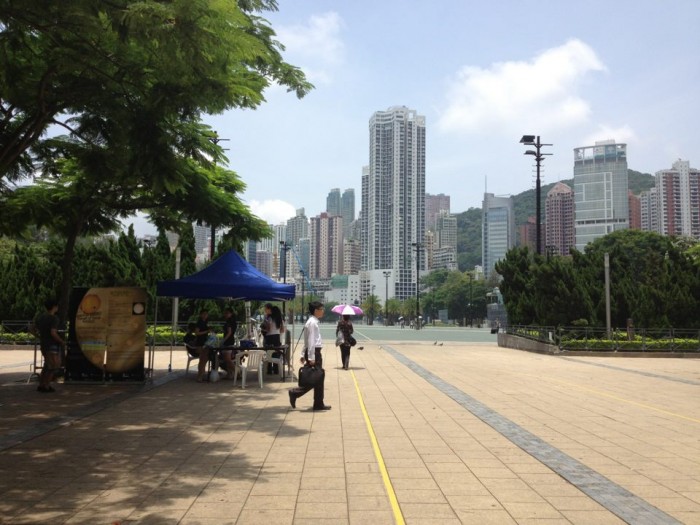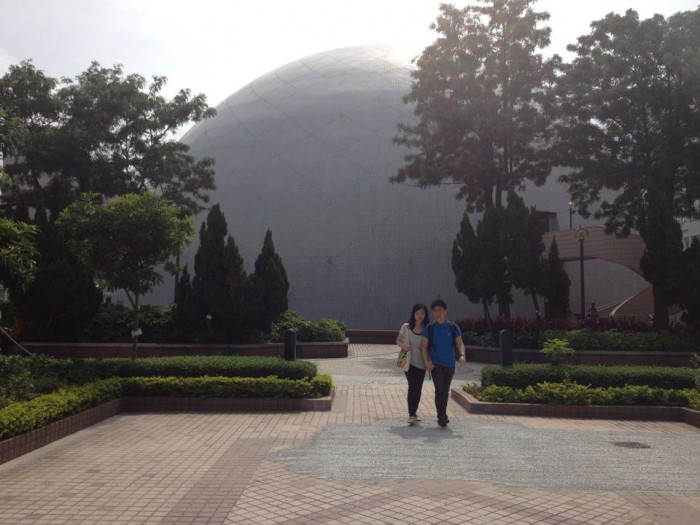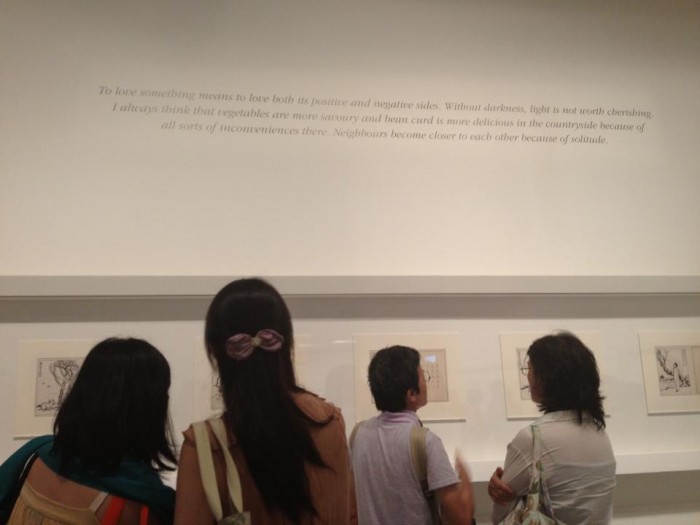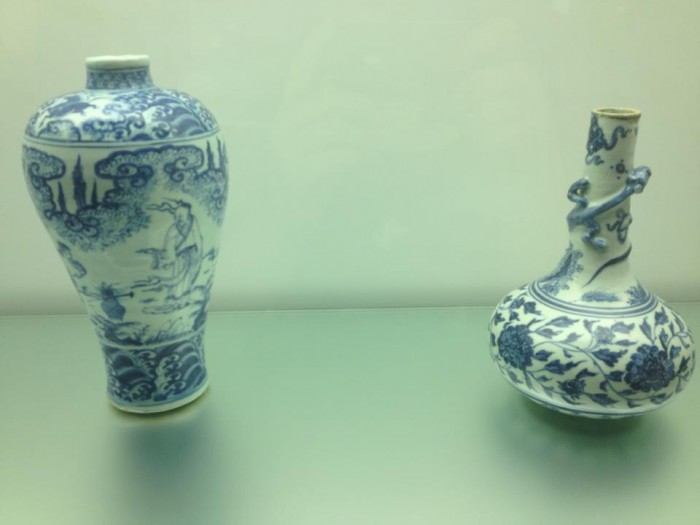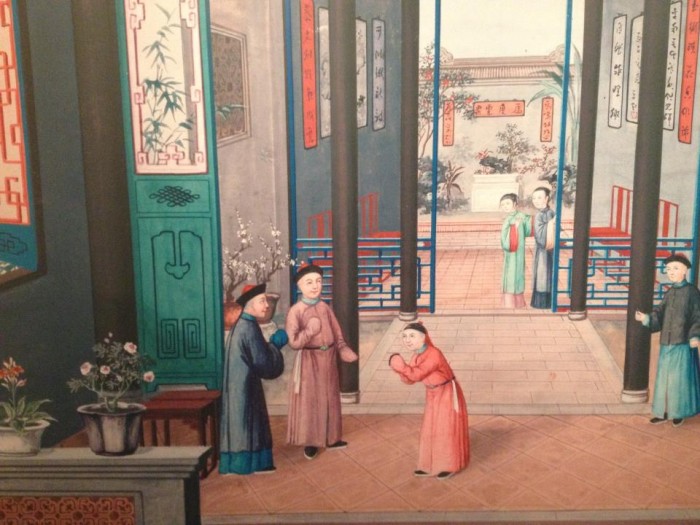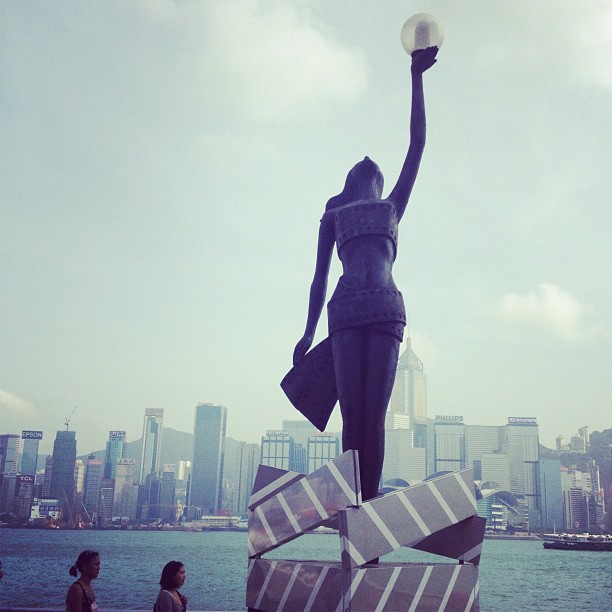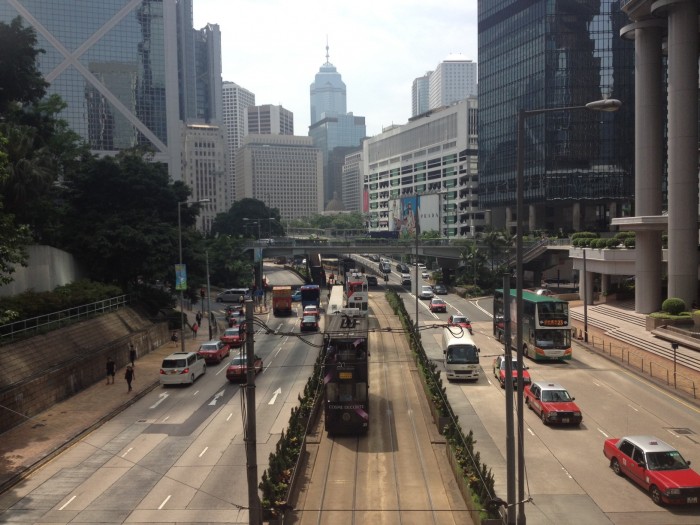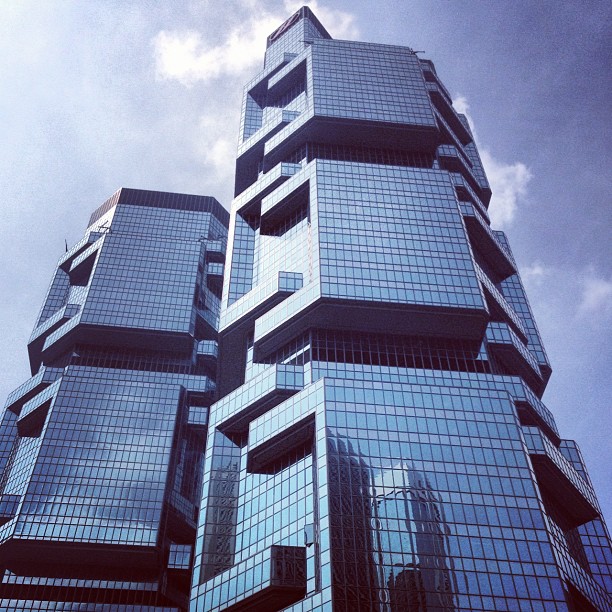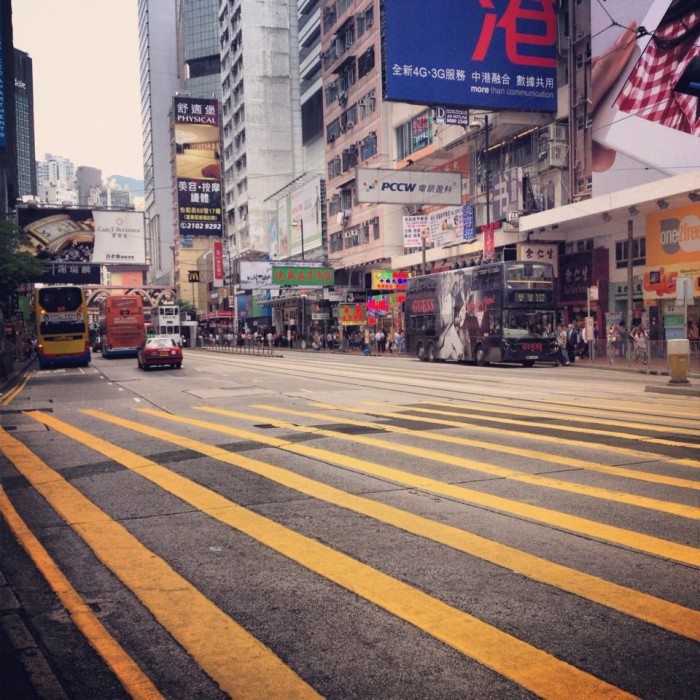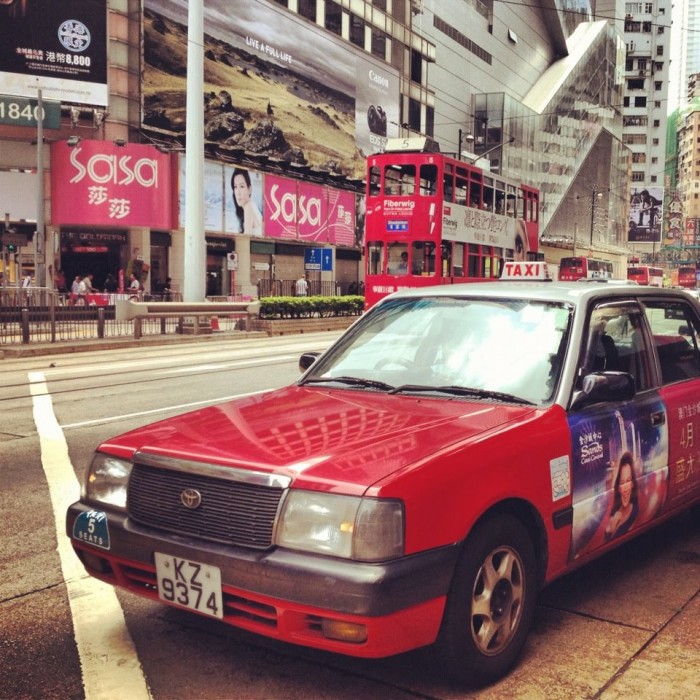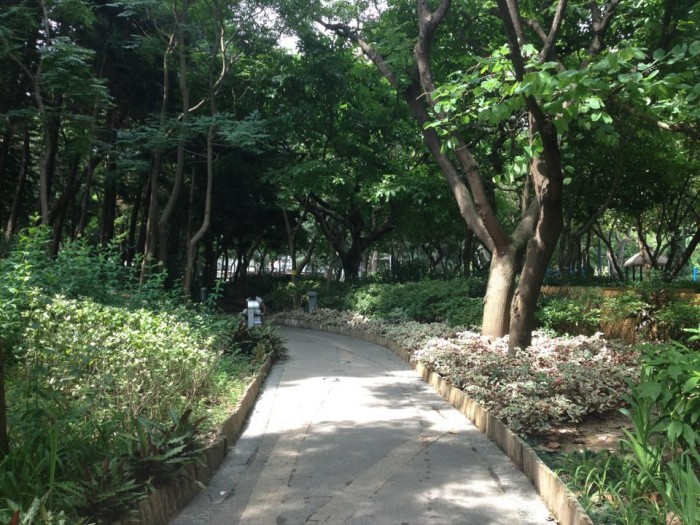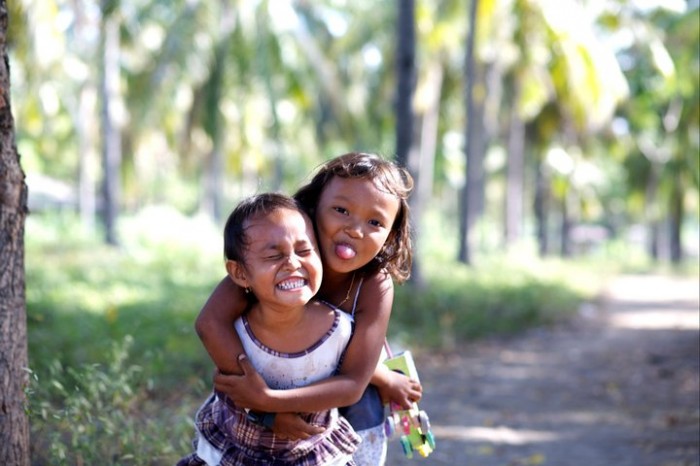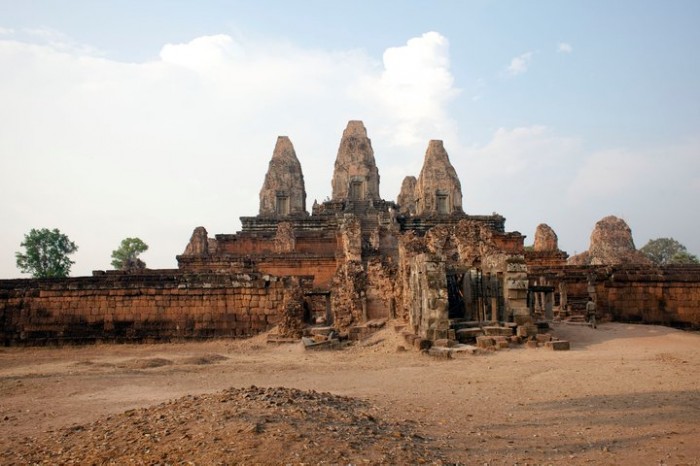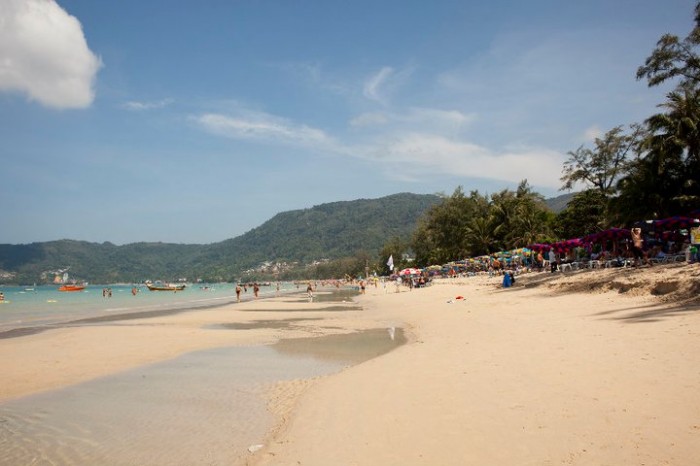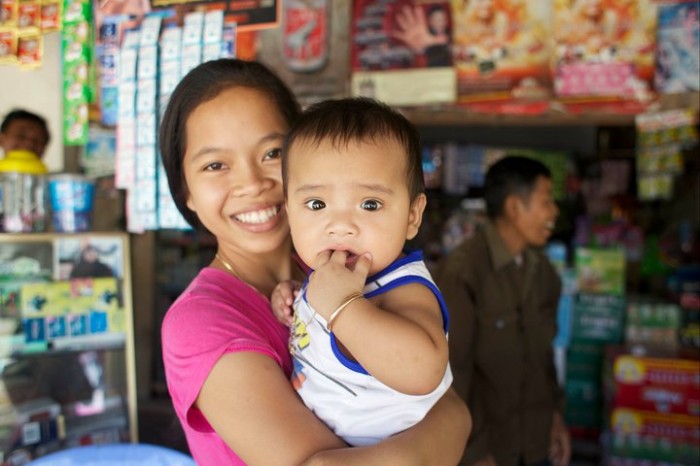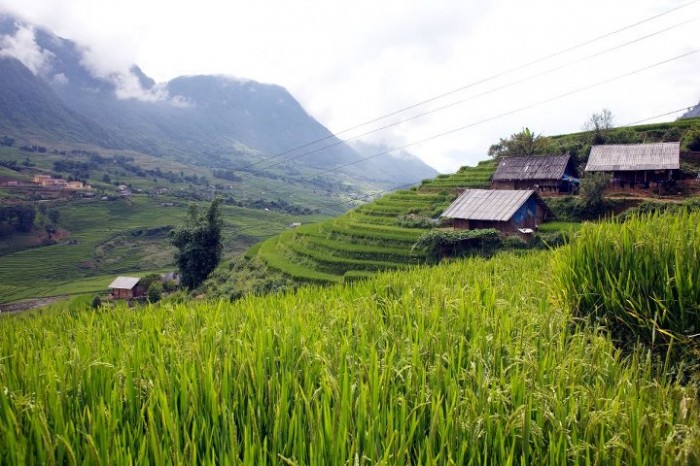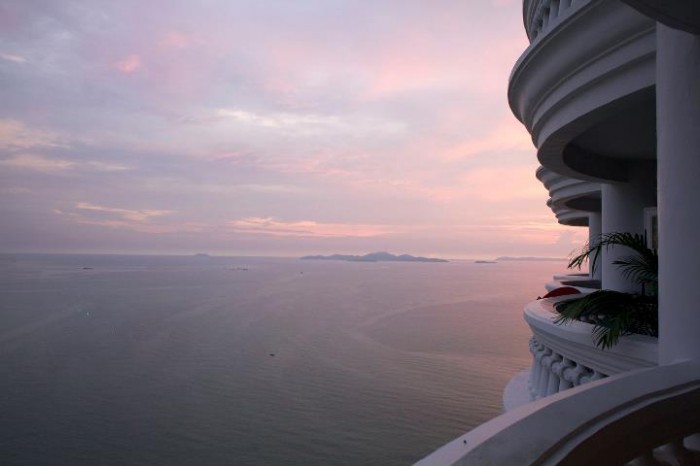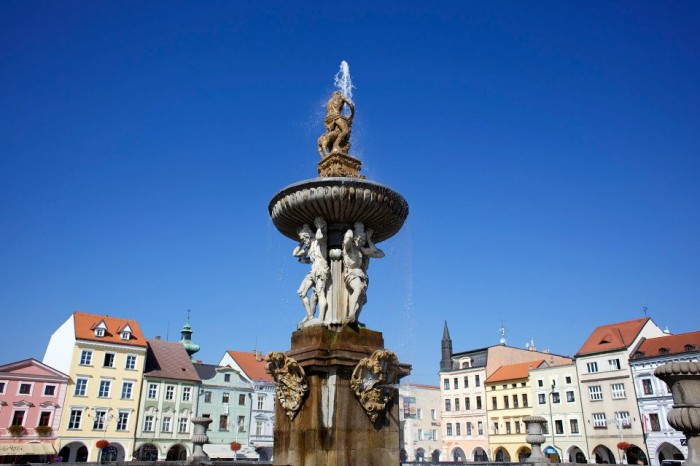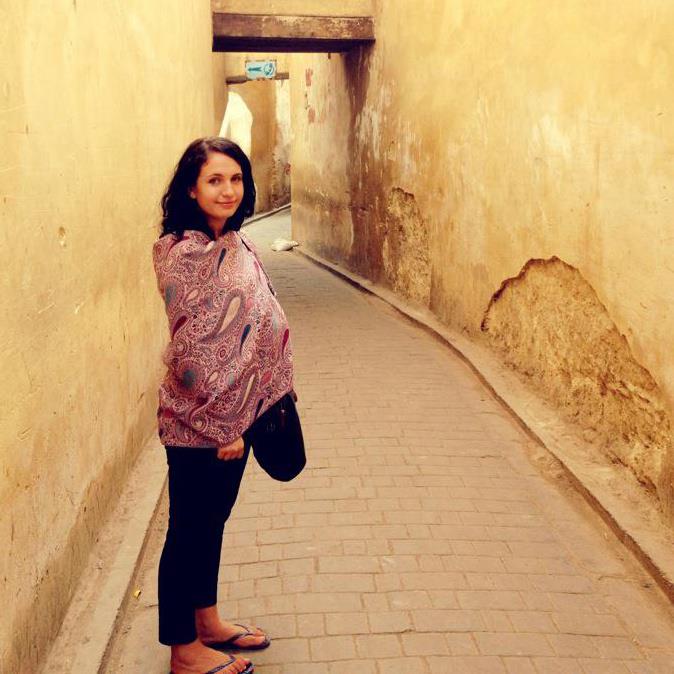Summer in San Sebastian
I’m just going to put it right out there: I love San Sebastian
It is one of those places I knew I’d love long before I visited it. I could tell I would by the way people spoke of it. Anyone I’d asked about San Sebastian would get this longing look; that “there’s no where I’d rather be” glisten in their eyes.
And now I have the same feeling. It’s quite simply lovely, one of the few places I love even in the rain. San Sebastian is located in the Basque county, a special region of Spain located near the north, where the people like to think of themselves as Basque and not Spanish. There’s a thick layer of French chic, owed to the proximately of San Sebastian to the French border and the hoards of French tourists who visit. In some ways it feels more French than Spanish, but there’s a lovely mix of both.
The beaches, mainly Playa de la Concha, are those you dream of when you think of European beaches. Golden sand, beautiful views but the most redeeming feature of these beaches is the fact they’re literally on San Sebastian’s doorstep. Nowhere in the world have I seen a better beach lining a city. For this reason alone, San Sebastian is a contester as one of my favourite beaches.
And another one of San Sebastian’s secret gems? The food. Oh my god, the food. My love affair with Thai food may have been shattered by delicious little pinxtos. Spain is famous for it’s delicious tapas, and Basque county is known for it’s mini tapas, called pinxtos (pronounced pinchos). I was lucky enough to be taken around by my Couchsurfing host, who happened to be a chef, to some of the best places to try pinxtos. You see, it’s very common in Spain to simply go to a restaurant, stand at the “bar” and enjoy a couple of pinxtos that that particular restaurant is famous for, before moving on to the next place.
Want to know the proper etiquette for eating pinxtos? Lots of napkins and toothpicks, both of which you seem to throw on the ground once you’re done with them, regardless of how high-end the restaurant. While you’re enjoying some of the best food in the world, try some Basque wine called Txakoli, but be warned, for me it tasted more like vinegar than wine. The French influence in San Sebastian is most apparent in the prices – you’ll find that it can be quite an expensive place to eat, especially if you hunt out the best pinxtos.
You’ll notice as you wander around that San Sebastian seems to be the playground of some very wealthy people. The trophy wives have their immaculately dressed babies and Louis Vuitton bags in tow; with shopping bags dangling off the pram’s handle bars. I can’t blame them, it is a truly lovely place to holiday, but you have to search a bit harder to find that youthful groove that is blatant in other European cities. A great escape from the masses of soccer mum’s is the walk up Monte Urgull. The views from the top are breathtakingly beautiful and it’s a very lush park, very romantic and perfect for a picnic. There’s also a free museum, located in the castle, focused around San Sebastian, I didn’t find it particularly interesting, but the panoramic views from the top are certainly the best in the city.
How many days do you need in San Sebastian? A lifetime! Honestly, I think a long weekend is perfect. Basque country is renowned for it’s temperamental weather, often flicking between sunshine and rain in a heartbeat. When it does start raining, there’s not a lot to do in San Sebastian, aside from shopping. I read the reviews of some of the museums, but none of them really appealed. You could make the trip to Bilbao, about an hour away, which is the biggest city in the Basque region. There’s a bunch of great museums there, including Guggenheim Museum which is an incredible building. If you do manage to visit San Sebastian during a patch of sunshine, be prepared to fall in love.
Summer Plans
At the moment I’m living just outside of Madrid (I’m loving it), for the next two months in a bid to learn Spanish and enjoy all that their culture has to offer. Afterwards, I’m planning to make my way home, the long way. I’ll be finished in Spain by late August and want to make my way to New Zealand by mid October, or round about. There’s a few countries on my to visit list, but I simply can’t visit them all – all of the countries mentioned below I have not visited, so REALLY appeal to me. I was wondering which you think are essential before I depart European shores for a long time.
Just as a side note – during the time between Madrid and New Zealand, I will be spending around a week in the Czech Republic with my former host family, enjoying the tail end of summer there and picking up my suitcase – so travel will be a bit more difficult from this point on. I plan to fly to New Zealand from Istanbul, Turkey. So bare in mind I have to get from Spain to the Czech Republic and onto Turkey, the places I go in between are what I’m interested in figuring out.
Here are the main contesters:
Portugal – First photo by Rstml, second and third photo by Michael Swiet 
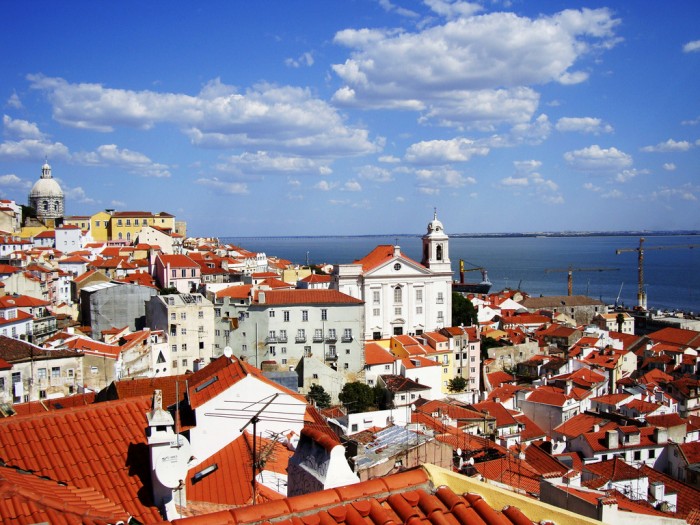

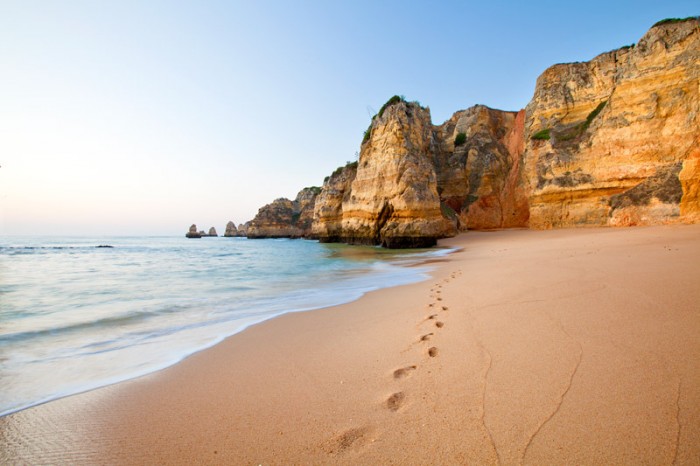

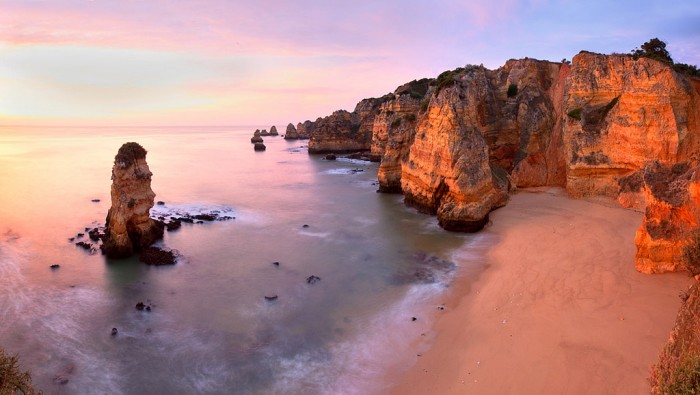
Morocco – Photos by Stephen Walford
Italy – Photos by Bulbol2010 
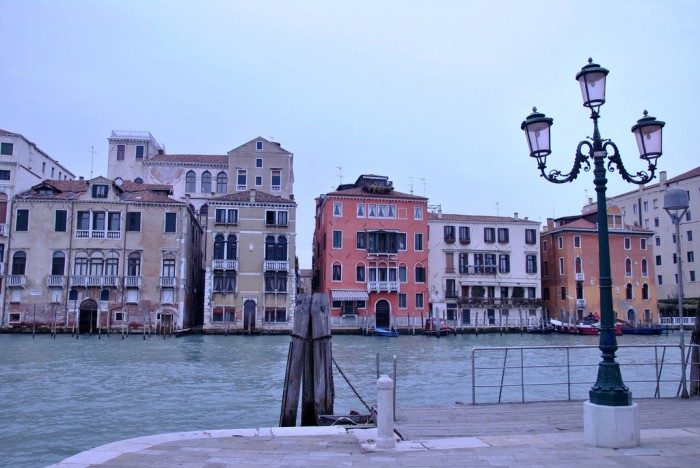

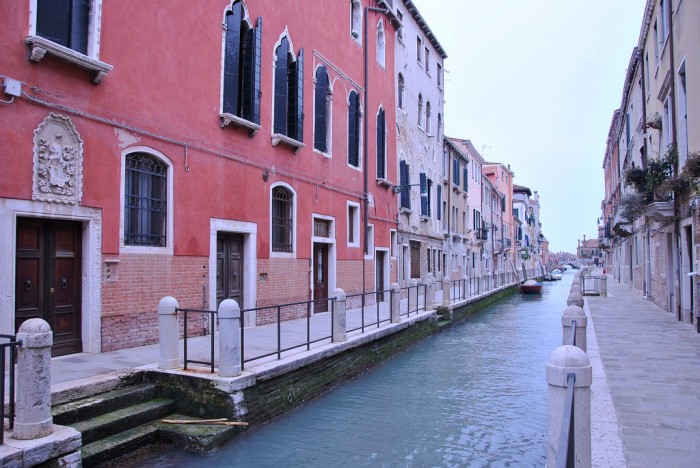

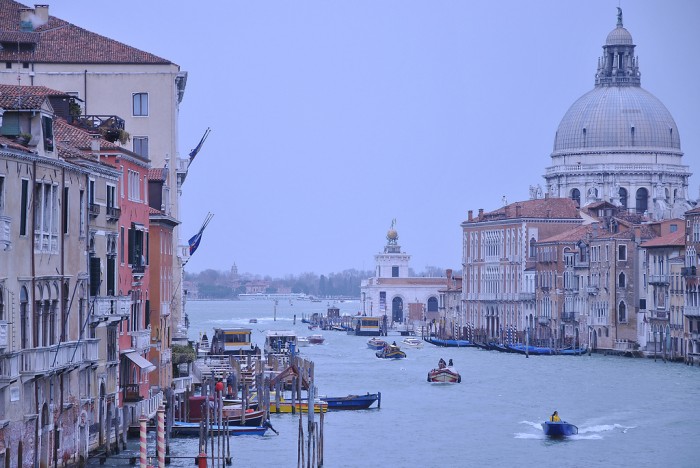
Croatia – Photos by Lena_Ni 
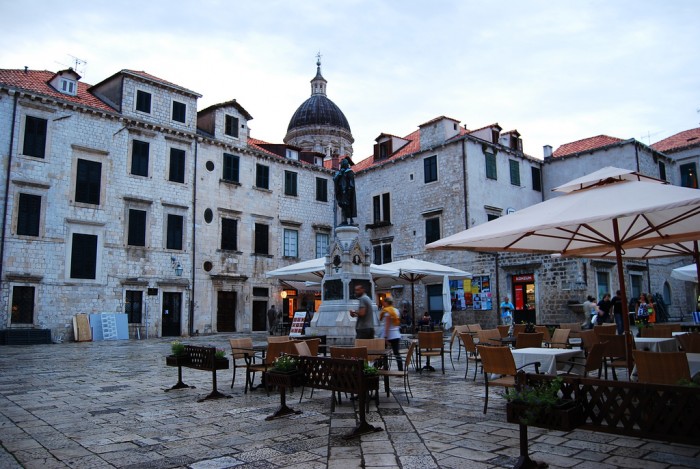

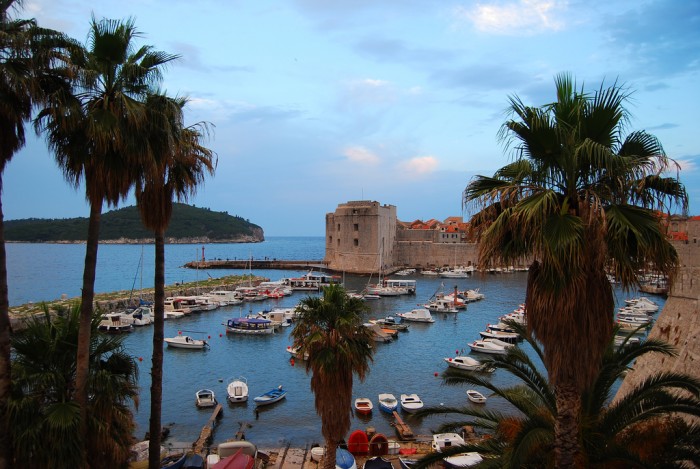

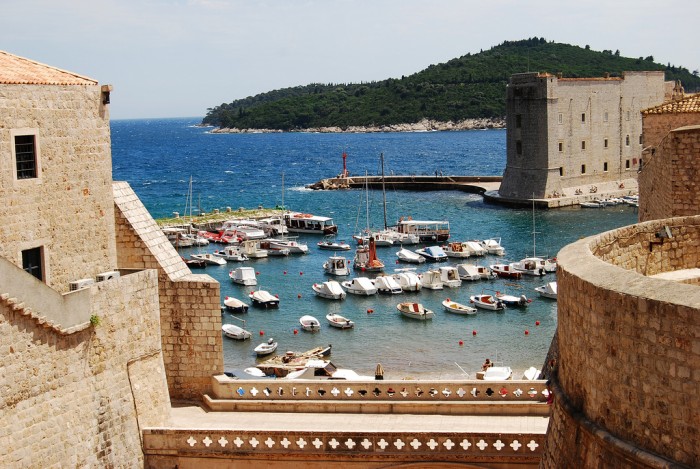
Slovenia – Photos by  Tridlad
Tridlad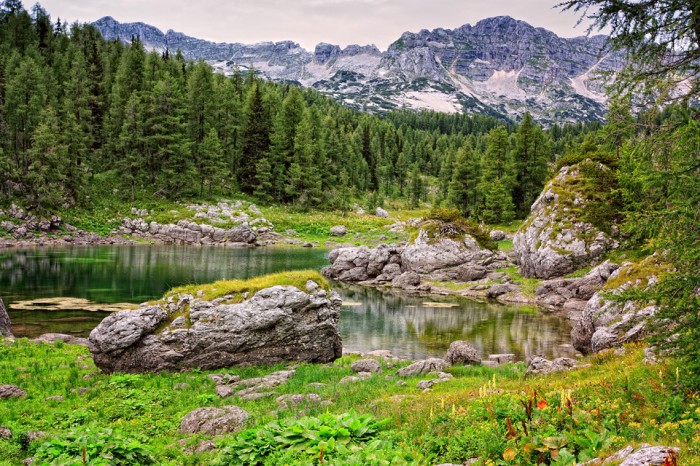
Greece – First photo by Alissa Ferris second by P and R and third by Peace Correspondent
These beautiful pictures have confused me more. I think I’d be happy to spend around two weeks in Turkey, so that really leaves 3-4 weeks for all the other places. Money IS AN ISSUE, so I want to keep costs as low as possible, I’m literally down to my last cents. As flights will become more pricey, I’m looking at locking in dates soon rather than playing things by ear.
Where do you think I should spend my time and WHY? Bonus points if the places are more affordable. Part of me is tempted to make my way by land from Prague to Istanbul, but I think that might be too expensive. As I’m living in Madrid I could easily delegate weekend trips to Portugal, Morocco and Italy, just for a taste, but I don’t want to sell the places short.
Any advice will be greatly appreciated.
iPhone Photography
After my camera was stolen in America, I bought an iPhone and have just used that as my travel camera since. If you’ve read about me, you’ll know that travel photography is one of the main reasons I travel – I love documenting new places and people. If I’m honest there’s no way that it compares to the quality of my SLR, but I don’t think you need an SLR to take great photos. The best thing about having an iPhone with such a good quality camera is that it’s always with you, so you can easily take it out of your pocket and shoot.
I do miss the confidence I felt when I took out my big, bulky SLR because in a way it signaled to people that I was serious about taking photos, and so often locals would come up to my camera and ask for a picture. But, in contrast the iPhone is discrete so you can take photos without people noticing too easily. The biggest drawcard is certainly that it fits in my pocket, my SLR could never do that. At the moment I’m still getting more comfortable with my iPhone 4S, but I’m learning the ropes and almost at a stage where I can take photos I’m really happy with.


Tips For Taking Great Photos On Your iPhone
Composition is really key! I think some people get a little “snap happy” with their iPhones and don’t really put in the effort to ensure that there’s good composition. That’s fine, I mean, everyone has the right to take photos how they please, but I think if you start actively considering your composition when you take photos, you’ll notice a huge improvement in the quality and usability of your pictures. Cropping after the fact will always result in a lower quality image, so try to get it right when you’re looking at the image on screen.
Focus properly on the particular part of the photo you want to be in focus. This has an added bonus, that not only will the camera focus on that part, but it will adjust the exposure of the image in order to properly or best expose that part of the frame. This is particularly important when you consider images where you might have a dark foreground or object and a bright background. Make sure that you’re focusing on the part of the picture you want to be best exposed!
Turn HDR on in the settings. I’m not a huge fan of taking HDR images normally, but I find that the HDR on the iPhone is pretty subtle and just helps eliminate parts of the image being really under or over exposed. You can adjust this in your camera settings so that it will automatically save both the original image and the HDR image. The other issue with taking images in HDR is that it takes a few seconds longer for your phone to process – this isn’t a huge problem, but can stop you from taking multiple images really close together.
Turn off your flash when you don’t need it, otherwise it might sneak up on the photo and make things look horrible and unnatural. There are times where the flash will be a lifesaver, but most of the time you don’t need it on, so turn it off.
Keep the camera steady, this is especially important when you’re trying to take night shots. If you’re trying to get the exposure of some gorgeous lights right at night time, try leaning on something, whether a ledge or a railing, just in order to give yourself that extra stability – it will really make all the difference. This proves true for photos where you are trying to photograph something that is moving, if you’re moving too it’s gonna end up being a photographic disaster. Steady on!
Zoom with your feet. I know that the iPhone has a built in zoom function, but it is TERRIBLE. It degrades the image quality so much, that if you want to do anything other than view it on your phone’s screen, you’ll be disappointed. Pretend you’ve got a prime (fixed) lens on your camera and take the challenge of physically “zooming” in all of your shots.
The most important thing to do is be realistic of the camera’s limitations. It’s really great for a phone camera, but it doesn’t compare to a professional camera. Be aware of this, and then get over it. When I first got my iPhone I kept joking that “it’s no 5d mark ii” which is true, but it also didn’t cost half as much as one and it’s main purpose is a phone. Once I got over the comparisons, I found myself a lot more excited to use it as a camera and as such my images improved.
Best Photography Aps
Camera+ – this is great ap for taking photos. You can edit photos within the program, or you can move photos you’ve already taken on the standard camera ap to Camera+ to edit them. It’s usual price is $1.99 but at the moment it’s on sale for $0.99 – I really like it and think it’s money well spent if you want a little more freedom in your photography.
Instagram – one of the most popular photography aps and totally free – yupee! You can sign up for an intagram account and share your photos. I like instagram as it has a lot of fun filters, but it crops all of the images you take into a square and degrades the quality a bit. In that regard, I prefer Camera+
just.SelfTimer – this is a free ap that does exactly what the name suggests, it’s a self timer. Handy for those moments when you want to be in the photo too. You can set the timer to a range of times, 3,5 or 10 seconds.
What’s your favourite iPhone photography ap? Do you have any tips to share? Post them here!
8 Little Travel Tips
I’m in Spain now. My new home for the next two months, while I try to learn Espanol and enjoy ALL the tapas. I figured I’d share some of my favourite little travel tips with you, I hope they serve you well.
Plug In Your Laptop – I am renowned for stealing free wifi, when I was in Calcutta I sat on the sidewalk stealing free Wifi. One things I’ve learned in my travels is that when your laptop is running on battery mode the WIFI strength is a lot weaker. In my hostel in Hong Kong there was no WIFI in my room, but when I plugged in my laptop an insecure WIFI network showed up. If you’ve found a connection that’s weak, plug things in and enjoy the difference!
“So Expensive” – If you’re doing any shopping in markets or third world countries learn how to say “so expensive” in the local language. It makes a real different. Prices usually drop by half. My magical trick. If this fails, walk away, then the price will surely stumble.
Use The Blue Arrow – I use Google maps often to find my way around, but I never knew about the little blue orientation arrow. You can preload maps when you have WIFI – by simply bringing it up on the page when you have an Internet connection. When you no longer have WIFI you can use the little orientation arrow to see where you are and what direction you’re going in. This is perfect for someone like me who seems to suffer from maps dyslexia!
Withdraw From ATMs – A lot of people fuss about changing cash in advance into the currency of the places they’re visiting, I don’t understand why. You are going to get RIPPED OFF! I have changed cash a handful of times in various banks or currency conversion places and often you’ll lose a great percentage of your money to fees. They need to pay their staff some how and that comes from your cash. The best rate I get consistently is from the banks and it means that I don’t have to worry about carrying too much cash.

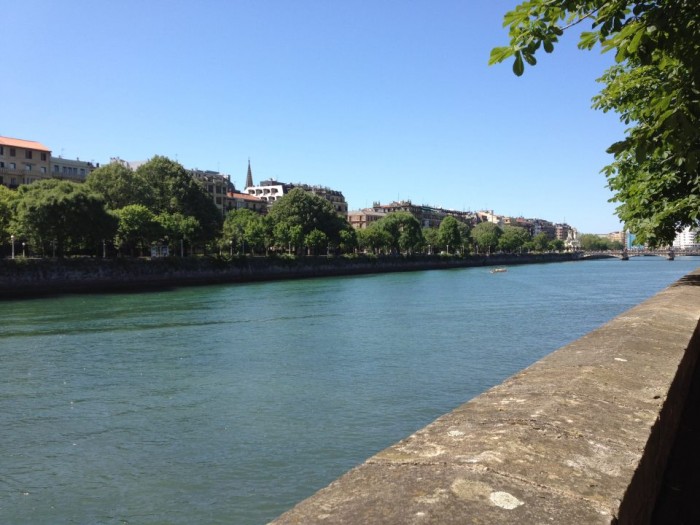
Wrongly Convert In Your Head – I always convert the money I’m spending into my home currency or the currency I’m earning in. Sometimes people say you should think in the local currency, but when I do that it feels like I’m spending monopoly money and it loses it’s value. I find myself spending way too much. If one New Zealand dollar is 6.1 Hong Kong dollars I will convert it in my head at a rate of 1:5. By doing so it means that I will think of things as a tiny bit more expensive than they are and spend less, yes!
Get Bitter – I hate bottled water. I blame the fact that my home town has the best tap water in the world. It tastes funny to me and I find myself spending a lot of money on juices etc because I just get sick of the cheap plasticy taste. I love lemon water and yesterday I decided to invest in a little bottle of lemon juice and have been adding it to my bottles of water. Turns a €0.20 bottle of water into something kind of delicious. This will save me lots of money in the long run, is super refreshing on a hot day and is good for you too.
Steal Spoons – So useful! I usually borrow mine from McDs (while I’m pinching their WIFI too). It’s handy so that you can just buy a cheap yoghurt or something to enjoy for breakfast while you’re on the go. It’s awkward trying to eat yoghurt with your fingers (someone told me once).
Use Couchsurfing – If you’re not interested in Couchsurfing with local people, it’s a good place to post questions on the forums about what’s going on. In terms of festivals, concerts, films, or exhibitions. That way you can see what the local people are interested in, rather than typical tourists traps. People on the forums are super friendly.
Did you enjoy this post? Check out 8 Things You Shouldn’t Do In Asia
What are your favourite little travel tips and secrets?
Couchsurfing in Mexico
When I was at Coachella with a friend, I decided that I wanted to do a border run to Tijuana, Mexico. I had always wanted to Couchsurf, I even hosted some people in when I lived in New Zealand. But I was always so apprehensive about my camera being stolen or something really terrible happening. After being stabbed in Indonesia and having my camera already stolen in Los Angeles, I felt that there was no harm in trying it out. I decided I would start Couchsurfing in Mexico.
Best decision ever. I had such a great time with my host in Tijuana that since then I’ve surfed in San Diego, Bilbao and will be surfing again in San Sebastian tonight!
So, why do I love it? Well, first of all it’s like meeting with a friend you’ve already met before, but haven’t. I love the social aspect of hostels, but sometimes I get tired of the small talk trying to establish what your story is. Thankfully, most of this gets cleared out of the way when you exchange messages with your potential host. You can read their profile, find out if you have any common interests and go from there – easy “pre-made” friend.
Secondly, they know their city better than any guide book possibly could. My hosts have known the best bars, cafes, sites and general attractions that I would have certainly missed if I’d stuck to a hostel and a guidebook. They’ll take you where the locals go. On my first trip to Mexico my host took me to his partner’s mother’s house for the best fish tacos of my life. What’s better than Mexican food? Home made Mexican by an actual Mexican.
Thirdly, they have their own already established social groups, so not only do you have one pre-made friend, but you might have a bunch depending on when you visit. When I was in Tijuana we met up with one of my host’s best friends and we went on a little road trip to Ensenada. This was much more fun than taking a bus alone. We ended up on a little boat cruise around the habor and then they took me to one of their favourite vineyards where we sampled ALL of the dips and filled up on tasty things. It was awesome!
Is Couchsurfing safe?
I can’t promise you it’ll be entirely safe, but I’ve had no problems. Couchsurfing hosts have feedback, so I think it’s always a good idea to read the feedback of the people you’re surfing with. If you’re a little anxious about security, make sure you know a decent hostel in the area that you can go to if you need to. You could always book a night’s accommodation for the first night and then meet up with your host for drinks and see how things are. All of my hosts have been awesome and people I hope to keep in touch with and would love to host one day in New Zealand.
Some people use Couchsurfing just as a ploy to make long term travel cheap, but I think it’s important that you’re genuinely interested in the people you choose to surf with and the experiences you’ll share together. It’s the best way to meet locals, who definitely speak your language and you’ll get a unique snapshot into what their life is like.
In the end I had an amazing experience Couchsurfing in Mexico. I made friends that I’ll always treasure and hope to visit again… and I’ll definitely be Couchsurfing in Mexico next time I visit.
Does anyone else have any Couchsurfing experiences? I’d love to hear them.
24 Hours in Hong Kong
This post will be the first 24 hours of my 48 hour trip to Hong Kong. It wasn’t my first trip to Hong Kong, previously I’d been there for a brief stop over. It was my first time outside of Australia or New Zealand and I remember how different everything felt. Everyone around me was speaking another language, the air smelled strange, massive billboards plastered with chinese characters – and that’s exactly where my wanderlust began.
Originally I was supposed to be in Hong Kong for five days, but my plans were interrupted and it ended up being another short trip of forty eight hours. Not long enough to see all of Hong Kong, but just enough time to get a feel for this crazy bustling city.
As I was making my way to my hostel, I found myself in Victoria park – it’s a beautiful sanctuary away from the craziness of the street. There’s lush trees, with a skyline of tall buildings in the distance. It is possible, however, to find yourself completely lost in the lush forest and you feel so removed from the chaos on the street.
As I was in Hong Kong on a Wednesday, the main museums are free! So I headed down to the Hong Kong Museum of Art. I was there mostly to enjoy the art, but also to enjoy the aircon.
After enjoying the museum I made my way down to the Avenue of Stars, which provides a gorgeous view of Hong Kong Island. I always find the skylines of big Asian cities such as Singapore and Bangkok to be overwhelmingly impressive. The view from Avenue of the Stars must be one of the nicest in Hong Kong and the best part? It’s free. You can take a ferry across the harbor, which is something I actually did last time I was here – if the weather’s great this is a must do.
I tried to find China Town, but google maps led me in the wrong direction and I ended up in what must have been Hong Kong’s red light district. I didn’t take any photos, but it was like Patong, Thailand had temporarily invaded Hong Kong, complete with ladyboys. One thing I love about Hong Kong is the fact there are a lot of pedestrian over bridges, so you can walk around the city above all the traffic and the busyness below. Also, there’s a building that looks like a transformer, which is all kinds of amazing.
I was pretty tired after such a long flight and so much walking around, so I had an early night. In the next few days I’ll post what I did on my last day in Hong Kong. Even though it was a brief visit and I didn’t manage to do all that I wanted, I had a great time and would definitely love to spend more time there.
Technology Ruining Travel?
I arrived in Hong Kong yesterday, checked into my hostel and went to the common area to finally get my bearings. There were four other people sitting in the lounge, two of them on their laptops, one on a iPad and the other on an iPhone. As I placed my keys and phone on the table I said “hello” only to be met with a brief nod of acknowledgement while everyone went back to their Facebook bubbles.
I couldn’t help but wonder whether how much of a negative influence technology has had on travel. If these people couldn’t clutch on to their friends back home, perhaps they would make a better effort to be present. I am guilty, too, of standing outside a Starbucks in order to scam free wifi so I can text someone from home or upload my latest picture to Twitter. I understand the fear of missing out on things back home. But I’m starting to question how much of this addiction to being, and keeping everyone I know, in the loop is affecting my travels.
Photography is one of my passions and I love to capture photos of the places I visit. But so often I see other tourists hidden behind their bulky SLRs and I wonder if they ever take a moment to look at anything just through their own eyes. You see, in the past getting film developed was relatively expensive, so I imagine people were a lot more conservative with the number of photos they took. More attention and time would have gone into deciding to ‘invest’ into the shot. These days images are cheap, you can walk around being as trigger happy as you like, employing a more hit and miss approach to photography. There are certain places I’ve visited such as Angkor Wat and The Eiffel Tower, that were littered with hoards of photographers pounding down on their shutter speed – so many that I didn’t bother to take photos myself.
There’s little need to look at a real map when you can let your smart phone’s map application show you the fastest route in real time. I have spent days in a city without getting a real feel for the layout, because sometimes I chose to be blindly led by my phone. There’s some magic in getting lost somewhere, in having to navigate streets that are filled with foreign names, trying to ask directions when you don’t speak the language – this is all beauty, hidden in difficulty, that we are not allowing ourselves.
Before I had an iPhone, I remember going to a dinner with a friend of a friend and some of his coworkers in Thailand. We went to a very nice restaurant, it was very popular and trendy. All of the tables were full and once we had ordered I noticed that everyone at my table pulled out their smart phones and conversation died off. As I looked around the restaurant, I realised I was in the minority. I saw people obviously on dates, with each person so engaged with their phone that there wasn’t even a hint of acknowledgement of the other person’s existence.
Despite all of the advantages technology provides, being constantly connected to technology can’t be a good thing. When you plug in your ear phones and put on some music you’re skimming away a layer of the life around you; the daily rituals of Muslim prayers, the sound of birds chirping, the chaos of the hustle and bustle of the people around you – you are missing out.
Do you think technology is ruining travel?
Guide To Travel Insurance
When I flew between Australia and New Zealand I never bothered with travel insurance. In part because I never flew with anything particularly valuable, but also because as a New Zealand citizen, healthcare in both of those countries is free for me. It wasn’t until I flew to Hong Kong and Europe that I first got travel insurance. I was debating between health insurance and travel insurance, but I need someone to explain how the ACA works? It was expensive for the two week journey, but the added security was a huge peace of mind. When I finally departed on my first solo adventure, I hesitated before purchasing travel insurance: I hadn’t come close to making a claim on my previous trip and it was expensive and I’m really careful. In the end, I realized it was a necessity and booked a few months travel in advance. I am so glad I did.
My trip progressed well and without any issue until I was in Calcutta, India and my worst nightmare became a reality: a family member of mine was killed in an earthquake that destroyed my city. It was a dark day, but thankfully my travel insurance pulled through and they organised my flights home to be with my family, saving me around $2,000. On my second adventure I was stabbed and my travel insurance reimbursed me for my medical costs (stitches – ouch), the damage done to my camera (almost $1,000) and paid for a replacement of my backpack. They reimbursed my medical costs when I had really bad food poisoning and even repaired my shattered laptop when it randomly broke. I have got my money’s worth and then some.
This is what you need in a good insurance policy:
- Coverage for the specific countries you’re visiting
- Provisions for lost or stolen property
- Coverage for your electronics
- Coverage for injuries and illnesses
- Medical coverage, including hospital stays
- Round the clock emergency help and services
- Emergency evacuation coverage
- Cancellation coverage during the trip, such as hotel bookings, flights etc
- Coverage for any hazardous activities you imagine yourself taking part in
- Personal accident and legal expenses
The first step to figuring out what travel insurance will suit you is to decide what electronics and/or valuables you are taking with you and how much they are valued at. You’ll find most companies will have limits to how much individual items can be insured for.
One of the best value and most recommended travel insurance companies, World Nomads, has an upper item individual insurance limit of $1,000NZD (varies based on your country of residence). This means for “flashpackers” like me, it is, unfortunately, not a viable option. I’ve heard such great things about World Nomads I was almost tempted to leave my laptop at home so that I could use them.
If you are New Zealand based another great insurance company you can use is Travel Insurance Direct – they meet all my above requirements but allow you to insure certain electronics up to $4,000NZD. They are around 10% more expensive than World Nomads, which is a bit of a shame, but I would prefer to have my laptop covered.
Certain types of credit cards will provide you with travel insurance, mine doesn’t so I am not very familiar with how extensive these policies are. I would advise that you check the policy wording to ensure that it meets my above criteria. It would be a shame to skimp out on decent insurance coverage only to find out when you really need it most.
Anyone have any suggestions of great travel insurance companies?
Travel insurance is something we all hope we wont have to use, but are really grateful for when we do need it.
Do You Need A SLR?
So many of my friends come to me asking whether they should buy a dSLR for their travel photography. It’s hard to say whether or not exactly you should buy one, as it’s a very personal decision, but often I find people are buying them for the sake of it and not really thinking about the practicalities of them. When I ask people why they want an SLR their response is always the same
“I want to take great photos”
Here’s a big surprise: you don’t need an SLR to take great photos, in fact I know a few people who brought SLRs expecting to open it out of the box, press the shutter and to take amazing photos – they were sorely disappointed. It simply doesn’t work like that, it’s all on the photographer to take great photos. A good camera helps take things “next level” but when you consider the additional cost and price, it might not be practical for you.
My first SLR was a Canon 400d, which is an entry level SLR. I had this camera for a couple of years, but only ever used the kit lens. I enjoyed taking photos and occasionally got a few photos I was proud of, but the truth was I could have easily taken equivalent photos on a Point and Shoot that would have cost and weighed half as much. I got to the point in my photography where I became frustrated, I wasn’t really making much progress, so what did I do? I invested in a 5d mark ii and spent time researching lenses that would suit what I wanted to achieve from my photography. It was an expensive decision, but my reasoning behind it was that if I had the best camera and lenses I could afford, then it definitely wasn’t my gear that was limiting me anymore, it was me. I found my photography improved in leaps and bounds. Do you need to invest in a full frame SLR for your photography to improve? No! You just need to change your frame of mind.
The truth is a high end point and shoot is probably going to serve you better than a low end SLR, especially if you’re going to stick to the kit lens. If you’re reading this article, then chances are you’re interested in buying an SLR or at least upgrading your camera, so let’s point out what I consider to be essential when purchasing a new camera if you want to take great photos.
The first thing I would encourage you to look out for is a camera that shoots with adjustable settings – for example, a camera that you can shoot in AV (aperture priority) or manual mode. This will allow you to have a lot more control of the specifics of the photo – which I believe is absolutely key to making progress in your photography.
The second essential criterion is: a camera that shoots in RAW. For some people this might not be as important as it is for me – it is a deal breaker. I will discuss the benefits of shooting in RAW properly at a later date, but for now I will say that shooting in RAW basically takes an entire snapshot of what the camera sees. When you shoot in JPEG or other formats, the camera automatically compresses the image. This means that when you come to edit the photo (a key aspect of photography, for me personally) you have an image that already has a fixed exposure and if you try to edit it you will negatively impact the image quality. However, if you shoot in RAW, you have much more flexibility with your image processing at a later date, as the “snapshot” of the image has been saved.
A high end point and shoot will meet both of those criteria, for example the Canon G12 which is a great camera. But SLRs are bigger, so they’re better, right? You might be able to take marginally better pictures on the entry level SLR with kit lens than your high end point and shoot, but, for the extra price you pay and the size and weight of the SLR, my overall opinion is no – they are not better.
If you’re going to set aside thousands of dollars to invest in good quality lenses to go along with your SLR then by all means, go ahead and make the financial commitment. But if all you’re looking to do is take great photos on a practically sized camera without destroying your bank account, then look for an adjustable high end point and shoot.
What do you you use for your travel photography?
At the moment I’m camera-less as my 5d was stolen in Los Angeles, so I’m using my iPhone!


